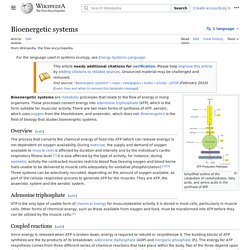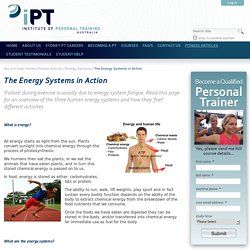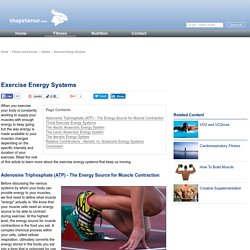

Winter Sports and Cold Temperature Nutrition - NASM Blog. If you have an overall balanced nutrient intake, your pre, during, and post workout fuel and hydration can make a huge impact on your performance, recovery between workouts, and injury prevention.

Your overall training diet is more important than any pre, during, and post workout meal or snack! If you haven’t been practicing your fueling like you have been training your body, it doesn’t matter what nutrition course you choose for your workout or training session. This overall nutrition approach is also important with colder temperature activities when we may forget to consider the increased importance of hydration. Physiological Adaptations and Nutritional Concerns for Training and Exercising in the Cold. Submiited by: Steve Chen, Doctoral Candidate, Teaching Assistant, USSA, Dr.

Ric Esposito, Chair of Sports Medicine, USSA Introduction Exposure to extreme cold weather can produce significant physiological and psychological challenges. Adaptation to exercise in the cold. Adaptation - The Definition of the Fitness Term Adaptation. By Paige Waehner Updated January 26, 2016.
Search within site for further specifics – mericicollege
We know that, if we want to change our bodies, we have to overload the muscles.

When we do that, the body's response is adaptation, which refers to the your body's physiological response to training. When you do new exercises or load your body in a different way, your body reacts by increasing it's ability to cope with that new load. There are different phases of adaptation that your body experiences. The Phases of Adaptation First Few Weeks - The first few times you do cardio or strength training, your body kind of freaks out as it gets used to this new stimulus. Continue reading below our video Play Video Signs You Need to Change Your Workouts You've Hit a Plateau - If you stop losing weight or stop making progress with your strength workouts, it's time to make a change.
Chap3.
This was found on the internet. Note: No date, No author, no book title, should you reference this source????? – mericicollege
What is the principle of adaptation? - Types Of Exercise. Bioenergetic systems. Bioenergetic systems are metabolic processes which relate to the flow of energy in living organisms.

Training Strategies - Principles of Training. Fitness Components and Human Physiology — PT Direct. Fitness Components and the energy systems Each of the fitness components has a duration and intensity that can be linked to the energy systems that allow our body to complete the work.

A high duration and low intensity activity will mainly use the aerobic energy system. A moderate intensity and moderate duration will use a mix of anaerobic glycolysis and the aerobic system. PDHPE HSC e chapter Ch5 1. Anaerobic and aerobic Energy Pathways. Energy production is both time and intensity related.

Running at a very high intensity, as in sprinting, means that an athlete can operate effectively for only a very short period of time where as running at a low intensity, as in gentle jogging, means that an athlete can sustain activity for a long period of time. There is a relationship between exercise intensity and the energy source. Energy Pathways Matthews (1971)[2] divides the running requirements of various sports into the following "energy pathways": ATP-CP and LA, LA-02, and 02. ATP - Adenosine Triphosphate: a complex chemical compound formed with the energy released from food and stored in all cells, particularly muscles.
When working at 95% effort these energy pathways are time limited and the general consensus on these times are as follows: The result of muscle contraction produces ADP which when coupled with CP regenerates ATP. Energy Proportion Graphs. Understanding Energy Systems: ATP-PC, Glycolytic, and Oxidative, Oh My! Human bioenergetics is an interesting topic.

However, energy systems function is understood by few and/or can be confusing to many. Open a quality exercise physiology text and it can leave you saying “huh?” All About Energy Systems for Physical Activity — Food. Introduction to energy systems When we exercise, depending on intensity and duration, fed state and other variables, a mix of energy systems is used, but often one dominates, depending on the nature of the activity.

Food is fuel, and understanding the principles of refueling and types of fuels required for particular activities is important in maximizing exercise performance. ATP and PCr System (anaerobic, alactic) ATP (adenosine triphosphate) is the primary molecule of energy for human movement. At rest we have a small store of ATP, perhaps a few seconds of intense performance worth.
Lactic acid system (anaerobic) The Energy Systems in Action — iPT Australia Limited. What is energy?

All energy starts as light from the sun. Plants convert sunlight into chemical energy through the process of photosynthesis. We humans then eat the plants, or we eat the animals that have eaten plants, and in turn this stored chemical energy is passed on to us. Exercise Energy Systems. When you exercise your body is constantly working to supply your muscles with enough energy to keep going, but the way energy is made available to your muscles changes depending on the specific intensity and duration of your exercise.

Read the rest of this article to learn more about the exercise energy systems that keep us moving. Adenosine Triphosphate (ATP) - The Energy Source for Muscle Contraction Before discussing the various systems by which your body can provide energy to your muscles, we first need to define what muscle "energy" actually is. We know that your muscle cells need an energy source to be able to contract during exercise. Power on Ice: Training Routines of the World’s Best Bobsled and Skeleton Athletes / Elite FTS. Elitefts™ Sunday Edition The above image is a work of a U.S. Army soldier or employee, taken or made during the course of the person's official duties. As a work of the U.S. federal government, the image is in the public domain. With winter in full swing in America, the jock culture has transitioned from throwing a football around outside to watching college basketball on the tube and at least thinking about getting ready for spring and the beach.
Avid lifters may be bundled up in sweats at the gym, or if they are working out in the garage, they’ve added a space heater or an extra layer of clothing. Snowboarding Tutorial: Boardercross Training Tips. Nordic Skiing. Characteristics of the Sport Nordic sports refer mainly to the disciplines of Cross country skiing, Ski jumping, Nordic combined (a combination of jumping and cross country skiing) and Biathlon (a combination of cross country skiing and shooting). All disciplines are contested at the Winter Olympic Games with both individual and team based events making up the program. Up to 1/3 of all winter Olympic medals are awarded to Nordic sports. Nordic sports as the name suggests originated in the Nordic countries of Europe.
Although these countries are still traditional powerhouses in the sport other countries like the US also feature prominently in medal winners at Olympics and world championships. Competition The main competitive season for Nordic skiers like most other winter sports is during the northern hemisphere winter – principally, between October to March. Nordic Winter Olympic Events Cross country skiing competition usually consists of a pre race warm up on course and then the race.
Athlete Profile: Steve Mesler. In 1959, the United States won its last title in men’s bobsledding. For 50 years, they were unable to repeat that feat. Until Steve Mesler and his team came along. Time to kick history’s butt, at 90 mph. Do you remember what happened in America in 1959?